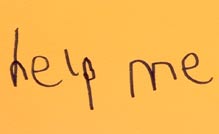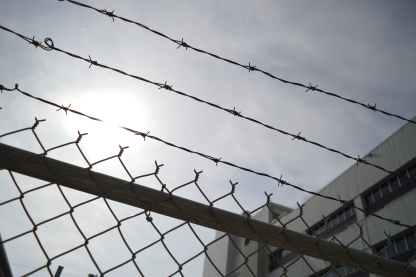 While the practice of child abuse goes back to the roots of human history, it is only in the last century or so that it has been recognized as a distinct phenomenon, something that children have a right to be protected from.
While the practice of child abuse goes back to the roots of human history, it is only in the last century or so that it has been recognized as a distinct phenomenon, something that children have a right to be protected from.
In 1868, in rural Cheshire, John Bradley and his wife died within a few weeks of each other. They left a family of four young children under the age of eight. Several weeks later an aunt investigated, and found the children, still at home, in a filthy condition and half starved. They had survived only by eating raw vegetables from the garden. No-one had checked. All the family members had assumed that someone else had taken them. Despite their ordeal, and to the surprise of many, they all survived. One of them was my grandfather.
Such events were not rare. Froggy's Little Brother by Brenda New was a well-known Victorian tear-jerker of a novel, describing the heroic efforts made by seven year old Froggy to work and keep alive his infant brother in an East End garret after the death of their parents. Child neglect would not have been considered as child abuse; it was merely one of the tragic, if unintended, consequences of normal life.
Child exploitation was tolerated in much the same way, not least because child labour was cheap and versatile; children could carry out simple repetitive jobs or crawl into spaces too small for adults. It took Evangelical philanthropists like Shaftesbury to urge the Factory Acts through Parliament, limiting the hours that children were allowed to work in factories, mines and cleaning chimneys.
So neglect and exploitation may have existed but were accepted. What about cruelty, then - was that deemed unacceptable? Again, no. Much cruelty took place in families and schools, and was justified in the name of discipline. "Spare the rod and spoil the child" was the predominant social and religious ethic. John Wesley's mother advocated iron discipline - backed up by whipping, if necessary: "Break their will betimes.....make him do as he is bid, if you whip him ten times running to effect it..."
Parental rights were paramount. Parents knew what was best for their own children, and they could delegate the responsibility to others if they chose. Physical punishment was essential to establish obedience - everybody knew that. The family was a sacred enclave into which no legislator dared to tread. Even as the impetus that led to the establishment of the Society for the Prevention of Cruelty to Children was taking off, a reformer Whatley Cooke-Taylor wrote: "I would far rather see even a higher rate of infant mortality prevailing.... than intrude one iota on the sanctity of the domestic hearth."
That view was already being challenged and it was cruelty that first drew charitable public attention to the problem. The first of the local Societies for the Prevention of Cruelty to Children were set up in Liverpool in 1883 and London in 1884: five years later they became the National Society for the Prevention of Cruelty to Children. In 1889 the act known as the 'Children's Charter' was passed, permitting the law to intervene between parents and children for the first time in history. The police were permitted to arrest anyone found ill-treating a child, and - long before women could expect similar protection from violence - could apply for a warrant to enter a home, if a child was thought to be in danger. Five years later, the act was extended to allow children to give evidence in court and it also became an offence to deny a sick child medical treatment.
Child welfare became the next major concern. By the beginning of the 20th century poor medical care, the existence of rickets, TB and malnutrition occupied the minds of Fabian reformers. School meals, free milk, and medical treatment brought about improvements in the physical health of children, and led to a sense of public satisfaction that children were being cared for.

Then the death of five year old Maria Colwell, murdered by her step father in 1973, despite being supposedly under the protection of the local authority, shocked the nation. It seemed the paraphernalia of local protection had failed, but despite the outcry, and the increased weight of responsibility placed on social workers, the death of Maria was followed by further, equally shocking, deaths: Jasmine Beckford, Heidi Kosea, Tyra Henry and others.
Now the media was in full cry after the social workers whose job was to protect these children. Social workers, it was assumed, were falling down on the job, allowing children to be beaten and killed in their own homes.
In the last third of the 20th century an even more sinister form of abuse was identified as a problem. This time the focus was on child sexual abuse, which many people found so repugnant they could scarcely bear even to think about it. It seemed that once again, the services which had been set up to protect children were failing. It’s possible that child protection services were bounced into over-reacting.
Certainly, there followed three high profile scandals of children being removed by social workers from their homes on suspicion of widespread parental sex abuse in Cleveland (1987), Rochdale and Orkney (both 1990). Parents or other adults were suspected of practices, such as satanic abuse, without conclusive evidence. The public enquiries which followed these cases mired social workers - and medical staff who claimed to have uncovered endemic parental sex abuse - into even deeper suspicion by the public.
Nor did the residential child care services escape from the atmosphere of neglect and corruption. During the last decade of the century, cases relating to activities in Residential Children's Homes during the 1970s saw many former staff members being convicted and imprisoned.
More recently, the profession took another blow with the death of Victoria Climbié. The grotesque suffering of one vulnerable child remained unnoticed by an army of professionals. While John Bradley's children were left home alone because everyone hoped someone else was coping, Victoria Climbié was killed because those who saw her failed to recognise her distress or talk to each other.
Although the history of child support has been marked with terrible, memorable errors and omissions, these shouldn't be allowed to obscure the very real and important gains won both at a national level through the work of reformers, and on an individual level, with countless children's lives touched and improved by the dedicated work of thousands of social workers.
Child protection has gone through many changes over the past century, re-defining its objectives as our understanding of abuse has changed. Now it includes not only neglect, economic exploitation, and cruelty, but emotional, psychological, and sex abuse as well.
So child protection enters the 21st century with a substantial depth of good – but often painful - experience of welfare and law. It must attract people of integrity, with a love of children and justice, people with wisdom, patience and vision, able and willing to work within the statutory framework. Could you be one of them?
A generation passed before the next piece of legislation, the 1932 Children's and Young Person's Act reminded society that there were children still at risk. The Act's main aim was to establish working conditions for young people leaving school as well as for those still at school and working part-time.
However, it also established the principle of supervision of young people, when outside the family: a responsibility placed firmly in the hands of local authorities, and laid the foundation for modern local authority children's services.
The second half of the 20th century saw an accelerating rate of change, both in the definition of child abuse, and the growing need for child protection. In the post war years, cruelty remained the criterion of child abuse. The scandal of Dennis O'Neill, a twelve year old boy killed by his foster-father in 1945 led via the Monkton report to the 1948 Children's Act.
Child protection was placed mainly under local authority control, but the NSPCC and other voluntary agencies retained a significant role. A specialist children's service was set up in every local authority nationwide, backed up by specialist child care training. A generation of children's officers presided over local authority services, until reorganisation in the early 1970s brought child care and social services into a generic service with a single form of training. Residential homes were set up and staffed by local authorities.
Once more there was a comfortable feeling that the problem was under control.



Rate and Review
Rate this article
Review this article
Log into OpenLearn to leave reviews and join in the conversation.
Article reviews